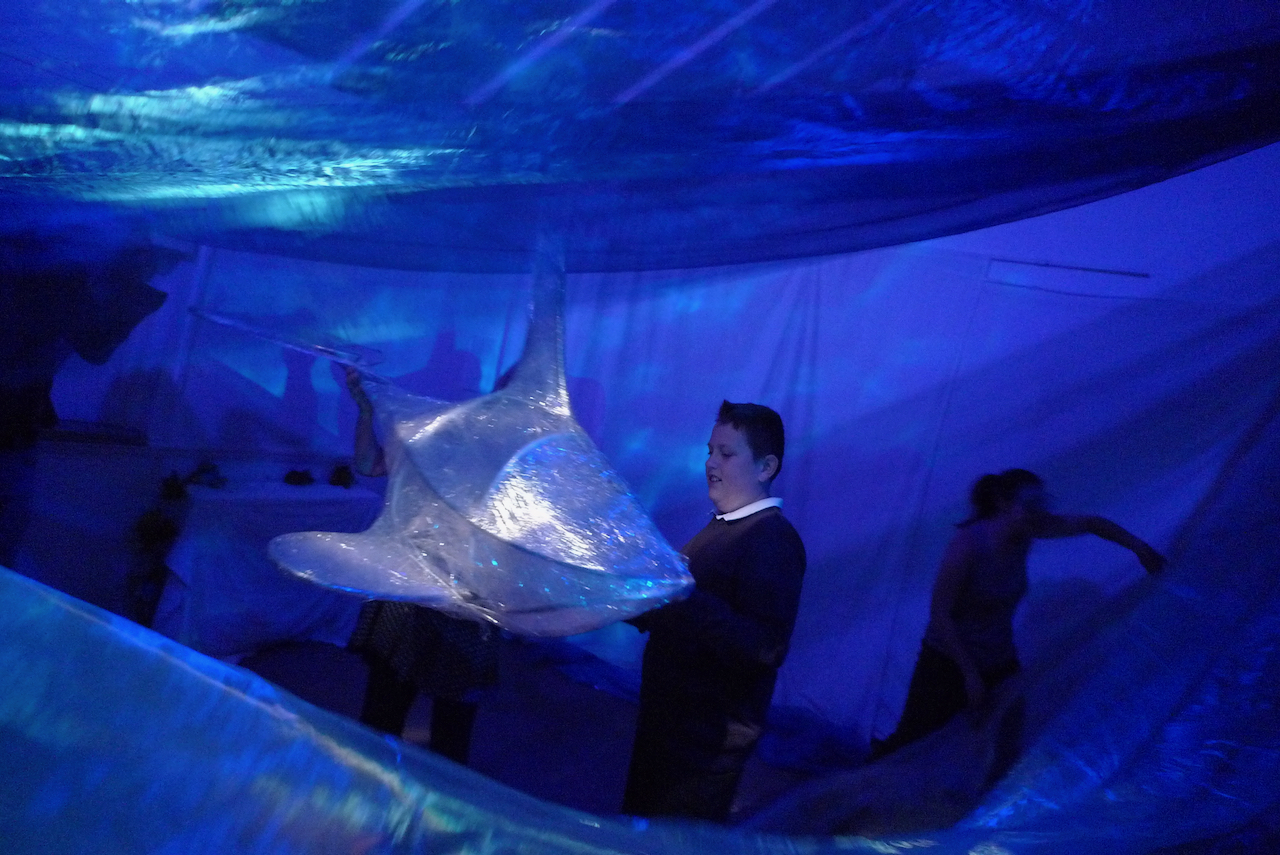Magic
When creating magic within a workshop, lighting and sound effects are
probably the best allies. Whether it's a magical environment,
introducing magical beings or doing magic 'tricks', always remember that some
participants may have hearing or sight impairments, so a range of multisensory
resources should be employed to enable access for all participants, either
through sound, textures or visuals.
Magical Environments: Aim
to engender surprise and wonder. Lighting is very important for setting the
scene, whether a magical underwater world teaming with strange and beautiful
creatures, lit blue/green with flowing organza reflecting the light, or a
woodland glade, hung with fairy lights.




Projections
are useful for creating landscapes or introducing dynamic elements to the
background - a herd of galloping horsemen, or a ballroom full of dancers


The sound effects that go with these kinds of projections enhance the experience for those who cannot see them and bring a sense of realism to those who can.


Magical
characters add to the mystery, whether they be puppets or role playing artists.
They can introduce hidden 'magical' props reinforcing a certain
theme or activity, or appear and disappear like magic themselves.
Pay
particular attention to the introduction of such characters - they may be heard before they are seen perhaps to build suspense. They should be well lit to
focus attention, the ‘million candle torches’ are good for this as they are
light and portable so can move with the character from participant to
participant or around the space.
The
character may introduce magic spells or lead participants on a specific
journey. Masks and costume are key to keeping actor's identity hidden, but
don't make them too scary!




Lots
of interesting ‘magical’ items can be found in the shops but can also be
cheaply made i.e. a plastic bottle or paper bag with coloured LED lights inside
can be just as engaging and magical as disco spinners, electrical orbs and
dream torches.

Planting
a seed and watching a tree grow is still a wonder of nature. This can be achieved using brown cloth for the trunk, topped with green leaves, which is raised using a pulley at a distance. Magic!

One way of including taste in the multisensory magic kit is using food colouring to turn clear water/lemonade into coloured drinks. A few drops of colour in the bottom of the glass will change the water like magic when poured on top.

A one way mirror is great for making objects and people appear and disappear; when lit from the front, you can
see your reflection, when lit from behind, you can see who’s hiding there. (See Mirrors)

UV
lighting is magical in itself; watching costumes and set turn bright white or
glow in the dark is fascinating. UV paint can be used to enhance costumes. UV
scarves, streamers, soft rubbery toys, armbands, waistcoats, facepaints - all
kinds of things that respond to UV light can now be sourced easily and cheaply.




Shadow
work is another way of creating magical effects. For small objects to appear so
large on a screen is a wonder to behold and it is surprising how many
participants get the connection.




Sound
effects can be used in many ways - to compliment the theme, with
vocals/sounds/music appearing from nowhere like magic or in a more focused way.

When someone is using a microphone, adding reverb and echo enhances the sound of the voice and gives the participant time to realise it is them making the sounds. It also gives options for call and response and encourages increased vocalisation.

Hiding a small speaker in a suitcase, box or bag and sending a voice or sound through it produces multiple ways of creating magical effects.

